The Hairstyles of Ancient Chinese Maidservants

In many modern historical dramas, maidservants and their mistresses often appear to have nearly identical hairstyles and outfits—only differing in how elaborate or simplified the versions are. Sometimes, the maid even looks more traditionally “correct” than the lady of the house! It’s no wonder viewers sometimes joke that they can’t tell who’s the noblewoman and who’s the servant.
Ⅰ. The Traditional Appearance of Maidservants
When it comes to the styling of maidservants in ancient China, their overall look evolved somewhat through different dynasties, but their hanfu hairstyles—especially the shape and structure of their buns—tended to stay fairly consistent. Typically, maidservants wore separated-style two-piece outfits or round-collared robes, which clearly distinguished them from upper-class women in traditional paintings.

Most of the time, you can tell who’s a maid in ancient Chinese artwork just by looking at the clothing. But there were exceptions. Maidservants generally wore layered skirts over trousers, a style commonly seen in the Tang and Song dynasties. During that period, round-collared robes and shirt-like tops became particularly popular for servants. However, after the mid-Ming dynasty, such styles became much less common.
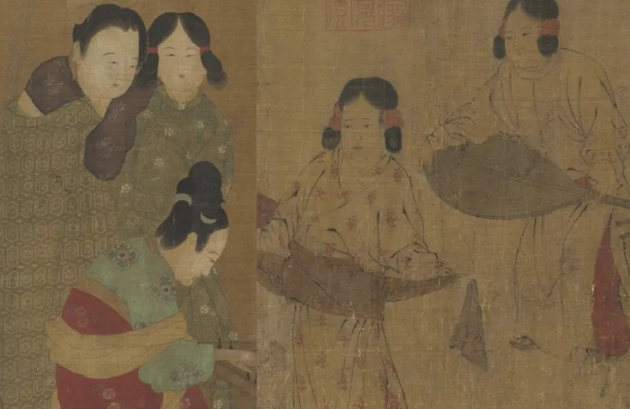
In Tang and Song dynasty paintings of court ladies, noblewomen and their maidservants often appear with similar hairstyles—such as the iconic twin-hanging buns—and wear similar round-collared robes. However, a closer look reveals subtle but telling differences in style and detail that reflect changes in fashion across eras.
In the Tang dynasty, maidservants typically wore loose-fitting robes with wide sleeves, often cinched at the waist with a fabric belt. These garments tended to be made in bright, eye-catching colors, reflecting the bold fashion sense of the time. Their hair was usually decorated with various combs and headbands, adding a touch of elegance to the otherwise simple attire.
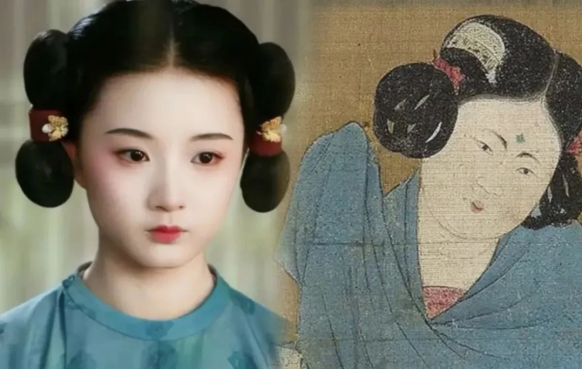
Ⅱ. What Was the “Fu Wei” Belt?
By the Song dynasty, the maidservants’ round-collared Chinese outfits became more form-fitting with narrower sleeves, reflecting a shift toward more refined and minimalist aesthetics. A unique accessory known as a “fu wei” (腹围)—a type of decorative waist wrap—was sometimes worn around the midsection. A pale yellow version of this accessory was so popular that it became known as “yao shang huang” (腰上黄), or “yellow at the waist.” It was often fastened with a leather or cloth belt, and hairstyles were accessorized with pearls and other delicate ornaments. Overall, colors leaned toward softer, more subdued tones compared to the Tang period.
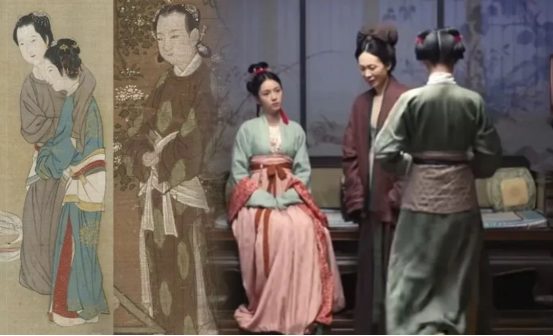
Interestingly, the fu wei wasn’t just for maidservants. It’s recorded that even high-ranking palace women wore this style during the Song dynasty, sparking a widespread trend. The Song scholar Yue Ke noted in his work Tingshi: Strange Fashions of the Xuanhe Era (《桯史·宣和服妖》):
“Toward the end of the Xuanhe reign, both nobles and commoners in the capital competed to wear pale yellow waist wraps, calling it ‘yellow at the waist.’”
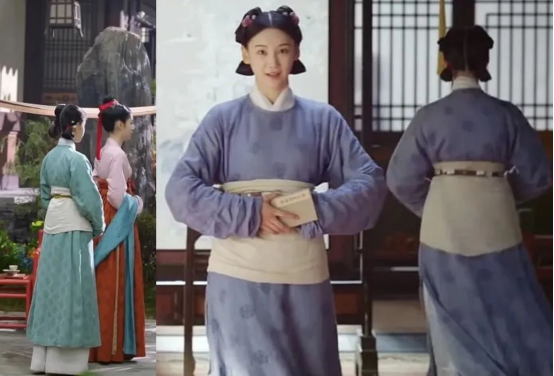
From the front, this type of “fu wei (腹围)” or “yao shang huang (腰上黄)” waist covering somewhat resembles the “wei chang (围裳)”, a skirt-like apron that was popular throughout different dynasties. In modern terms, it’s quite similar to an apron—serving a practical function by protecting the clothing during physical tasks.
These waist wraps were usually made of light-colored fabric, which likely helped convey a sense of neatness and cleanliness in the maidservant’s overall appearance. In terms of visual styling, such elements made the difference between mistress and servant clearly noticeable.
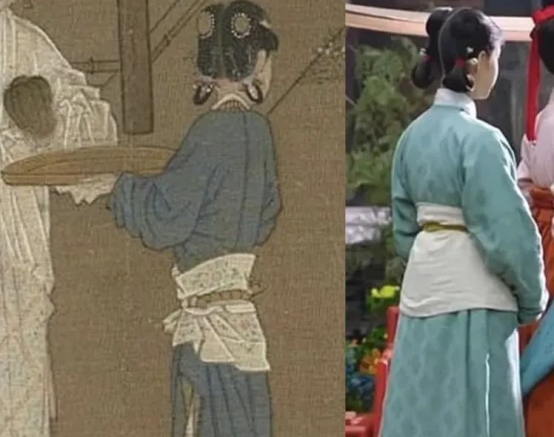
Ⅲ. What Hairstyles Did Maidservants Wear?
One of the most recognizable hairstyles worn by maidservants was the “twin-hanging buns” (双垂髻). The key feature of this style is the “hanging” or “dangling” shape—typically two loops or buns placed just behind the ears, with strands or coils hanging downward. If the hanging element is missing, the style is often simply referred to as “twin buns” or “Yaji” buns, depending on the shape.
Another hairstyle frequently seen on maidservants is the Yaji (丫髻), or “forked bun.” This was originally a child’s hairstyle, characterized by a small knot of hair tied on one or both sides of the head, resembling tree branches or forks.
Since many maidservants were brought into noble households as young girls, they often wore these hairstyles throughout their youth. Most were not yet adults, so they didn’t wear the more complex updos that adult women used. In fact, the Chinese word for maidservant—“ya huan” (丫鬟)—comes from this very hairstyle, linking the role and appearance closely together.
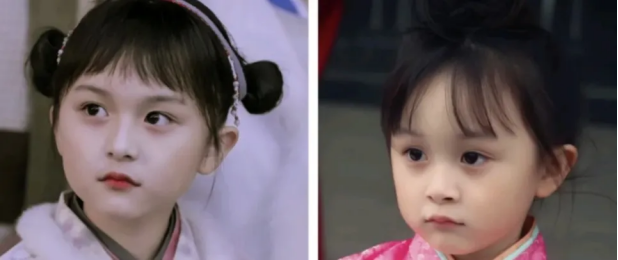
In some classical Chinese paintings, maidservants with twin buns or Shuang Chui Ji hairstyles are shown with loose-hanging hair, indicating that their hair wasn’t yet long enough to be fully styled into an updo. This detail reflects their young age, as many maidservants started serving in households from childhood.
In Ming dynasty paintings by Qiu Ying (or works attributed to him), various hairstyles and outfits of maidservants can be observed, further supporting this point.
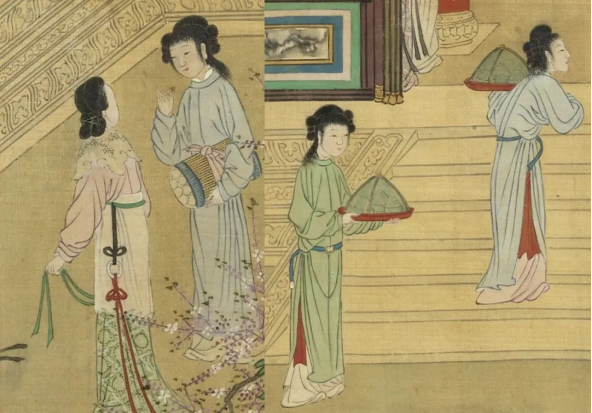
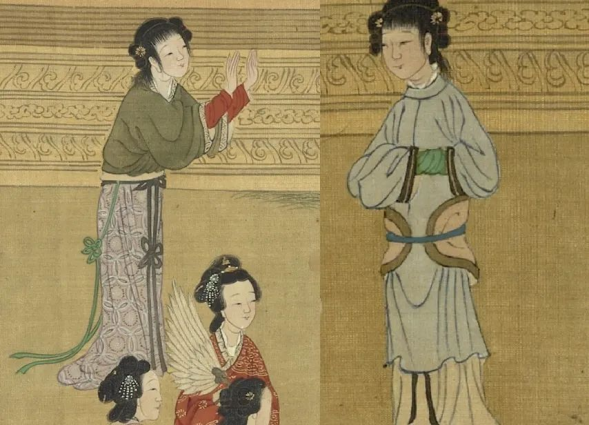
Hairstyles of adult maidservants are rarely depicted in ancient paintings. By then, they typically held managerial roles rather than serving as basic attendants, and thus had a certain level of status. At that stage, they were old enough to wear their hair in simple updos, reflecting both their maturity and more practical responsibilities.
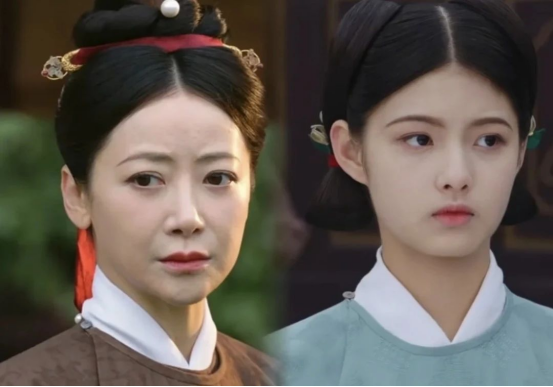
Ⅳ. What Did Maidservants Wear in the Ming Dynasty?
In the early Ming dynasty, maidservants typically wore the popular aoqun style—a short jacket (ao) paired with a long skirt (qun). While their clothing changed with the times, their hairstyles generally remained consistent with the styles mentioned earlier.
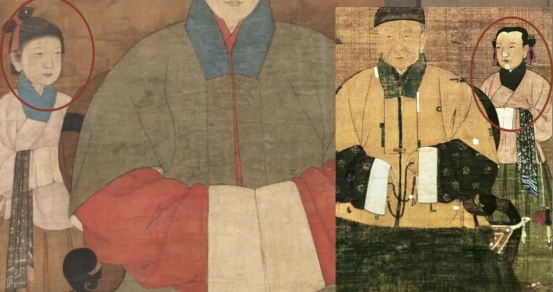
By the mid to late Ming period, especially toward the end of the dynasty, maidservants could also be seen wearing high-collared, cross-collared robes. They often tied a fu wei (腹围, waist wrap) around their midsection, a practical element that emphasized their working status and made daily service more convenient.
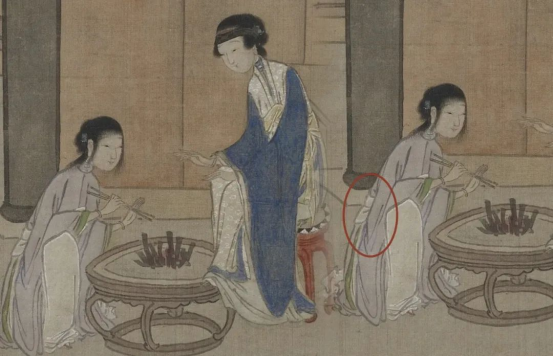
Today, many historical costume dramas draw inspiration from Tang, Song, and Ming dynasty styles—even in fictional settings—so there’s a wealth of visual and historical references to draw from. Thanks to this, hanfu costume design in recent productions has become increasingly accurate and refined.
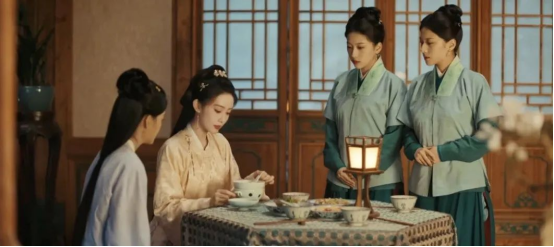
Summary
That said, some shows still show little to no distinction between maidservants and their mistresses in terms of costume design. For example, in the image below, both characters are styled almost identically—this kind of approach feels careless and often makes it hard for viewers to distinguish between roles.
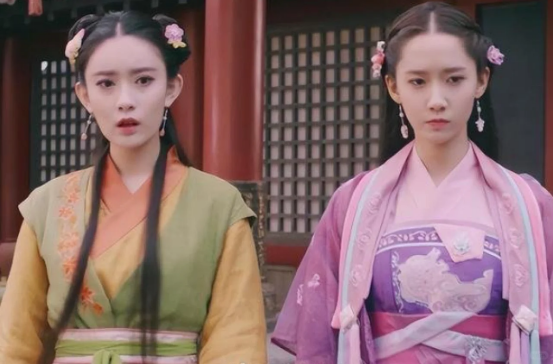
If we look back at classic dramas that remain beloved to this day, their success often comes down to details like this. Take The Legend of the White Snake, for instance—even if someone hasn’t seen the show, the visual difference between the maid and the lady is instantly clear. In reality, designing a maidservant’s look isn’t that complicated—it just takes research and attention to detail.
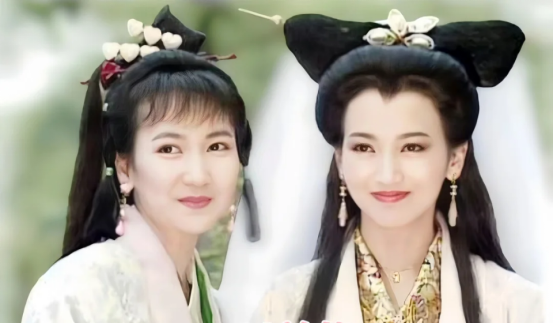
What do you think? Feel free to share your thoughts!
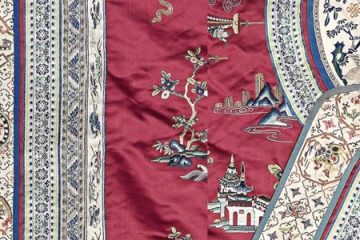
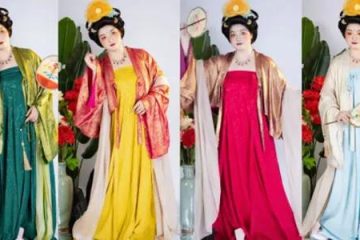
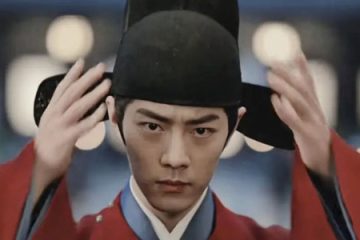
0 Comments